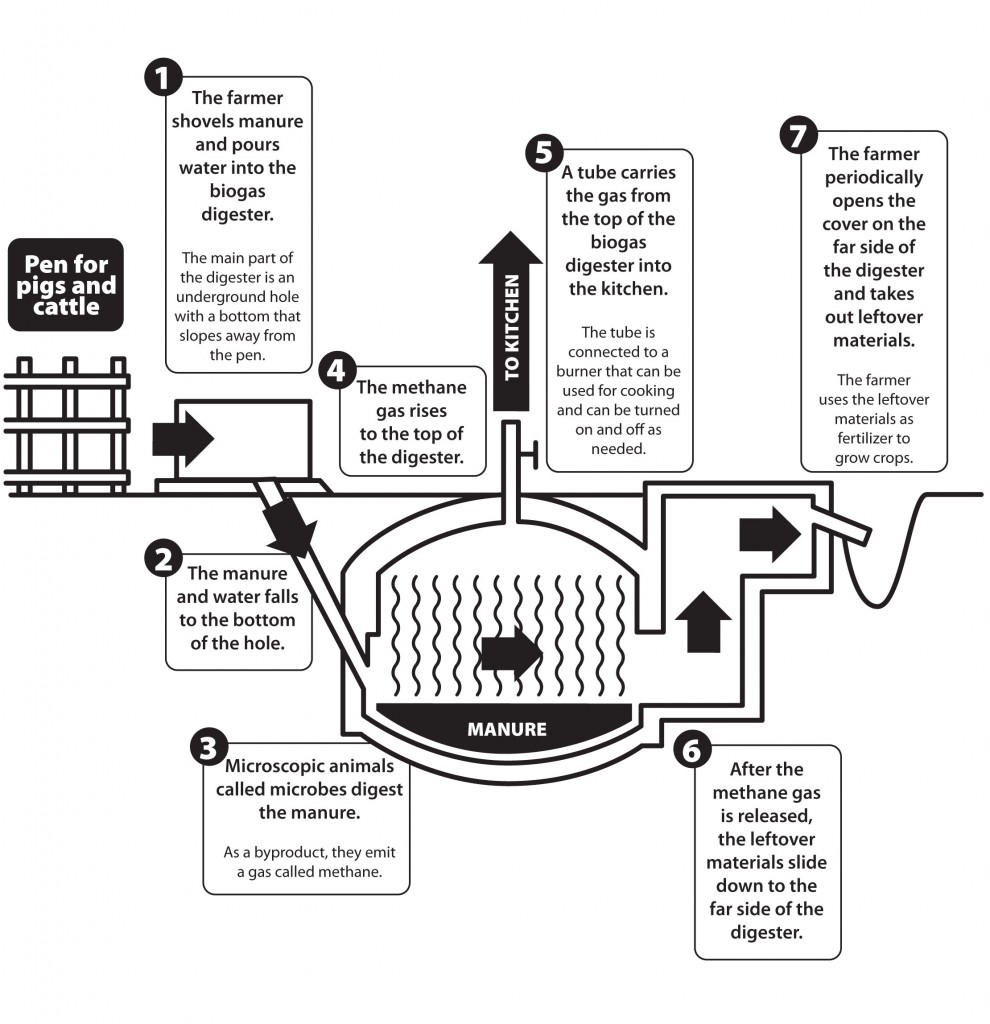Can you imagine having to find wood for fuel to cook breakfast? What if you had to do it in a place without any trees? What if you had to burn that wood inside a small kitchen, where the smoke you inhaled made you sick? That’s the reality many of Heifer’s project partners, especially women, face every day. The great news is that the same livestock that are providing them with nutrition and income have something else to offer ? their waste, which can fuel a biogas generator and provide an odorless cooking fuel piped right into the family’s kitchen! Communities around the world, with Heifer’s help, are beginning to build and use biogas generators. That means healthier women, healthier children, and a healthier environment. Here’s a diagram that shows how a biogas generator (also called a biogas digester) works:

See how biogas is changing lives in Uganda and how it can dramatically improve health.
You can build your own version of a biogas generator (no animal waste required!) at home or in your classroom. It’s a great hands-on way to learn about decomposition and renewable energy resources.
Materials:
You’ll be creating methane gas by feeding food scraps to the microbes living in the soil. Microbes are living organisms so small that you cannot see them without a microscope. As a by-product of their digestion, some microbes emit methane gas.
Mix the vegetable scraps, grass, and soil. Using the funnel, pour it into the bottle. Then, stretch a balloon carefully over the opening of the bottle, and duct tape around the balloon’s base to seal it to the bottle and keep outside air out.
Over the next few days, the microbes in the soil will digest the mixture and create methane gas, which will fill the balloon. Every other day, measure the amount of mixture in the bottle, and measure the circumference of the balloon by wrapping the string around it, marking it, and measuring the string.
Read more about how Heifer uses biogas technology around the world.